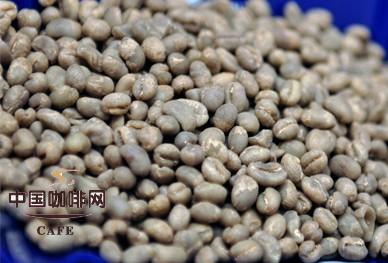The basic Taste characteristics of Coffee beans from the main producing areas of Blue Mountain Coffee

After coffee beans spread to all parts of the world, due to the different climate, soil quality, planting methods and processing methods, the taste of coffee beans can be said to be completely different. Here is a list of the basic flavor characteristics of Arabica coffee beans from different producing areas (it should be noted that the flavor of coffee produced by different producing areas and different farms in the same place will be different. Some coffee producing areas that are generally considered to be of mediocre coffee quality will also breed amazing boutique coffee in some coffee estates!
Variety
Land of production
Flavor characteristics
Remarks
Sour
Gan
Bitter
Alcohol
Incense
Blue Mountain
Jamaica
Strong
Strong
Weak
Strong
Strong
The price is high, and the output is very small.
Colombia
Colombia
Medium
Strong
Weak
Strong
Medium
High output and high quality
Sandushi
Brazil
Strong
Medium
Weak
Medium
Medium
The maximum yield, smooth taste, suitable for blending base beans
Manning
Sumatra, Indonesia
Weak
Weak
Strong
Strong
Strong
Individual flavor, widely welcomed
Mocha
Ethiopia
Strong
Medium
Weak
Strong
Strong
Delicate and diversified flavor
Java
Java, Indonesia
Weak
Weak
Strong
Medium
Medium
Suitable for assembling
Costa Rica
Costa Rica
Strong
Strong
Medium
Medium
Strong
High quality, classic coffee
Kona.
hawaiian islands
Strong
Strong
Weak
Strong
Medium
Low output, high quality and high price
Important Notice :
前街咖啡 FrontStreet Coffee has moved to new addredd:
FrontStreet Coffee Address: 315,Donghua East Road,GuangZhou
Tel:020 38364473
- Prev

Coffee basic coffee brewing steps and coffee powder grinding knowledge
Siphon grinding: the medium and fine siphon pot is a method of extracting coffee by using steam pressure. its interesting is that it can fully see through the process of coffee extraction. After boiling, the boiling water in the flask evaporates directly into the funnel, and the coffee extraction process is completed. The extracted coffee flows into the flask again, as if it were a dramatic performance, not only in taste, but also visually.
- Next

How to determine the freshness of coffee beans
There are three steps: smell, see, and peel. Smell: put the coffee beans close to the nose and smell them deeply to see if you can clearly smell the aroma of the coffee beans. If so, the coffee beans are fresh enough. On the contrary, if the aroma is weak, or has begun to appear greasy, it means that the coffee beans are not fresh at all. This kind of coffee beans, no matter how much effort you put into grinding and going
Related
- Beginners will see the "Coffee pull flower" guide!
- What is the difference between ice blog purified milk and ordinary milk coffee?
- Why is the Philippines the largest producer of crops in Liberia?
- For coffee extraction, should the fine powder be retained?
- How does extracted espresso fill pressed powder? How much strength does it take to press the powder?
- How to make jasmine cold extract coffee? Is the jasmine + latte good?
- Will this little toy really make the coffee taste better? How does Lily Drip affect coffee extraction?
- Will the action of slapping the filter cup also affect coffee extraction?
- What's the difference between powder-to-water ratio and powder-to-liquid ratio?
- What is the Ethiopian local species? What does it have to do with Heirloom native species?

